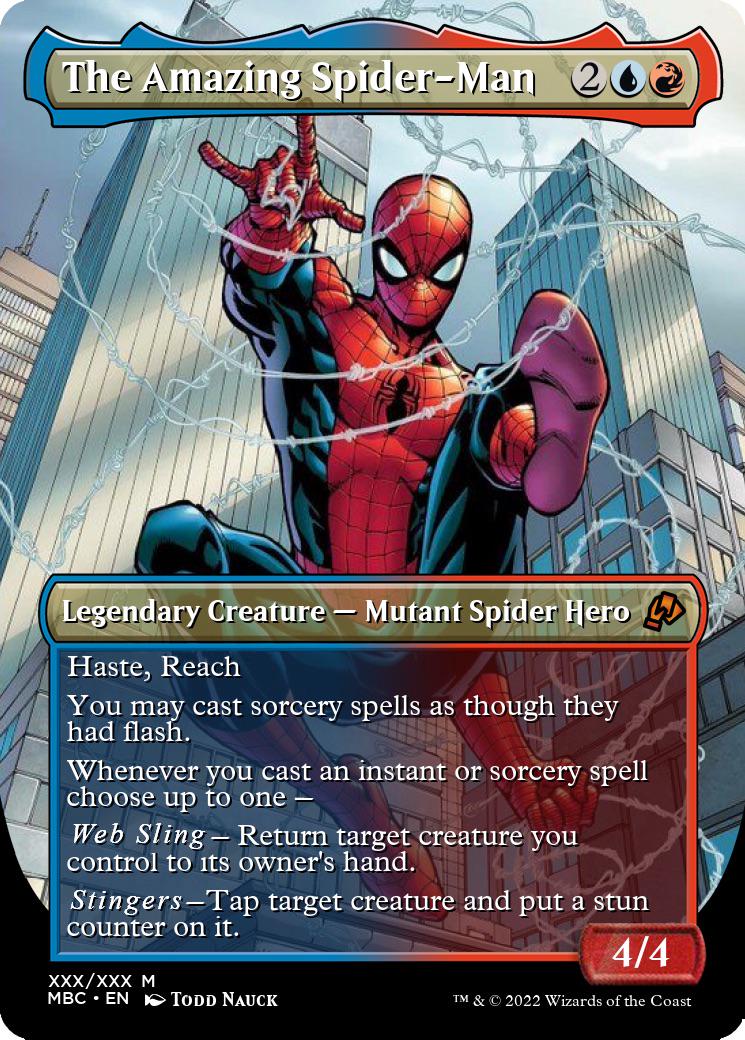In the ever-evolving landscape of Magic: The Gathering, players have grown accustomed to announcements of new sets with the eagerness akin to children waking on Christmas morning. However, when Wizards of the Coast recently unveiled the Spider-Man Magic: The Gathering collaboration devoid of any preconstructed Commander decks, the air of anticipation thickened with disappointment. Yet, from the depths of this dismayed silence rose an unexpected hero: Spider-Punk.
Now, Spider-Punk isn’t just any card; he is the epitome of anarchy woven into a realm governed by rules and strategy. At a mere cost of two mana, Spider-Punk boasts a Riot ability capable of granting haste or a +1/+1 counter. And while that might seem neat, it’s certainly not earth-shattering. The true magnetic pull of this card lies in its potent, disruptive influence that Spider-Punk exerts over the tabletop’s fabric: a radical, all-encompassing declaration that no spells or abilities can be countered, and damage simply cannot be prevented. For some, this fistful of rebellion is precisely the boost of red disruption that Commander was missing all along.
But here lies the crux of contemplation amongst players—the double-edged sword that is Spider-Punk’s formidable effect. On the one hand, this marvelously unruly assurance allows the wielder to blitz towards victory unchallenged by the infamous Counterspell or its kin. However, with the fickleness of a pendulum’s swing, as soon as your turn ends, opponents welcome the same liberating clarity. The strategy could be a masterstroke or an Achilles’ heel, as rivals with quick cast tactics may seize control with ease, turning your would-be victory march into a perilous stroll across a minefield. Complementing this trepidation is Spider-Punk’s minor physical stature, rendering him a rather quick and easy target for immediate removal before his charm can truly settle.
Despite these intricate threads of risk gnawing at its mantle of promise, the market’s appetite for Spider-Punk swirls unabated with fervor. As players jostle to behold this bonafide game-changer, standardized versions of the card are already garnering presales in the low twenties. Meanwhile, those fervent for spectacle are reaching ever deeper into their pockets, with foil versions orbiting around sixty dollars, and the borderless variations, pieces of art married with mechanics, fetching between forty-eight and fifty-five dollars.
Yet, the spotlight does not dwell on Spider-Punk alone in this new set. The game of Magic is an ensemble stage, and among this merry band of disruptors sits the Soul Stone, a card poised to become the crown jeweler’s chase item. Imagine an indestructible mana rock with the role of a necromancer; talk about doubling down on utility in true megalomaniac fashion. Meanwhile, Doctor Octopus salutes all admirers of villainous aspirations, potentially leading a tribal cadre whose solo performances are woven with card draw shenanigans—a villain after all loves their schemes.
Then, there stands Green Goblin, donning the role of brandishing impish chaos through Mayhem, a new ability that nods to the spirit of chaos by turning discarded cards into credibly dangerous menaces. A neat win for players who revel in chaos; a nightmare for those preferring tranquility and order.
What occurs here is more than strategy or deck-building; it’s sorcery laced with mechanical mastery. The introduction of these tactile variances speaks volumes to Magic’s style—a walk through a world adorned with the endless echoes of creativity and extended universes unconstrained by their initial perimeters.
Magic: The Gathering, with each enchanting set, iterates its enthralling narrative further, beckoning you once more into the embrace of its card-birthed worlds. Whether or not Spider-Punk remains a perennial favourite or wanes into a chapter of nostalgic mention, the echoes of its impact on Commander will reverberate through the echelons of play long after the last card of this set is drawn.

